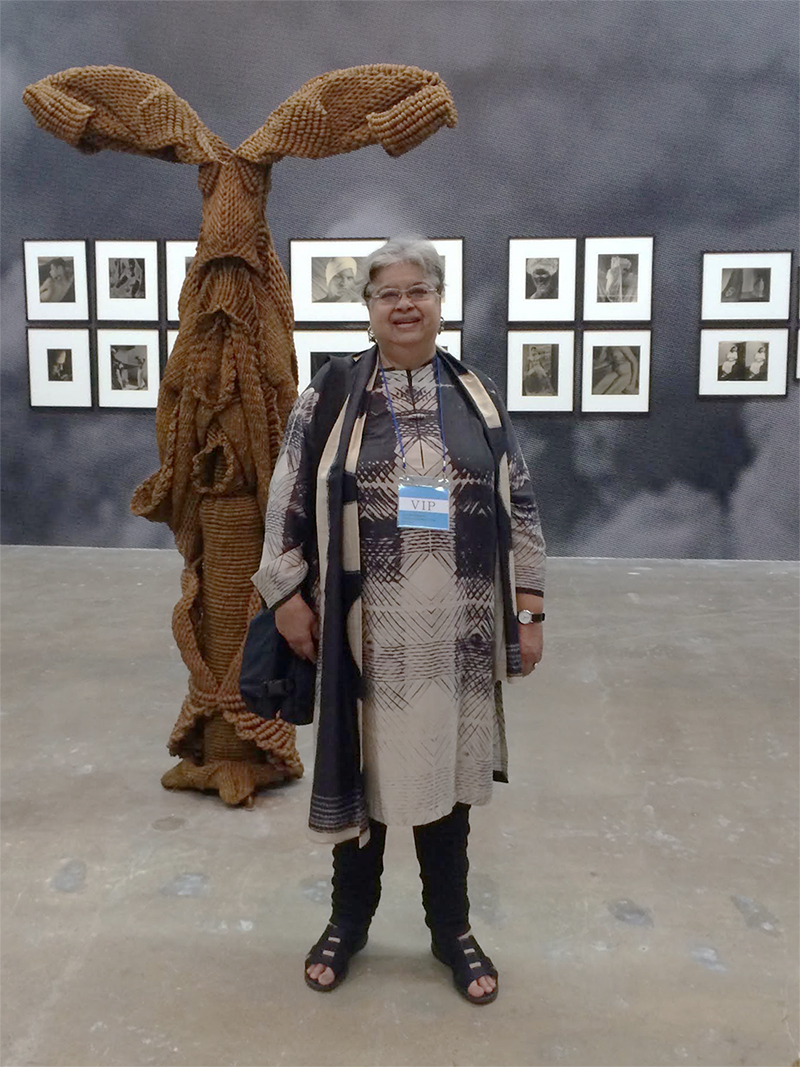News
Indian Sculptor Mrinalini Mukherjee Dies at 65


On February 2, Indian artist Mrinalini Mukherjee passed away in New Delhi due to lung complications. The sculptor, known for large-scale sculptures in organic forms and natural materials, was 65 years old.
In recent months, works by Mukherjee, who was considered by many to be at the height of her career, had been producing six-figure prices at auction, presenting at international art fairs, and drawing crowds at blockbuster art-world events such as the 2014 Gwangju Biennale—where she greeted visitors alongside Arboreal Enactment (1991–92), a trio of large-scale hemp and jute sculptures. But perhaps most significant is her retrospective exhibition, “Transfigurations: The Sculpture of Mrinalini Mukherjee,” which is currently showing at the National Gallery of Modern Art in her native New Delhi. Open to the public since January 2015, the show is a roving tour of five decades of the artist’s continuous experimentation with material and form. Often described as being erotic, divine, human, floral and vegetal, Mukherjee’s tactile works ranged through the years from twisted, knotted works in tough, sisal hemp and jute to folded, contorted ceramic, in both large and small sizes.
Born in Mumbai in 1949, and raised in the northern city of Dehradun, Mrinalini Mukherjee was the only daughter of Indian artists Benode Behari and Leela Mukherjee. By age 21, Mrinalini had earned a degree in painting from the MS University of Baroda, near Mumbai, and a postgraduate diploma in mural design under KG Subramanyan. In 1971, a British Council scholarship sent the imaginative young sculptor to the West Surrey College of Art and Design in the United Kingdom, where she pursued her tied-fiber works and began to gain notice.
But it was in New Delhi, to which she returned and spent the remaining decades of her career, that her practice bloomed. Mukherjee’s first solo exhibition, which was held at Shridharani Art Gallery in 1972, featured warped, woven forms in dyed natural fibers—a series of works for which she was gaining a reputation. Named after deities of fertility, the crudely shaped, anthropomorphic pieces were seen as sensual and suggestive. Additional group and solo exhibitions then followed, and Mukherjee’s practice later evolved to include hand-modeled ceramic pieces evoking similar forms.
In 1994, Mukherjee received an invitation to exhibit at the Modern Art Oxford (then the Museum of Modern Art, Oxford). The prestigious UK gallery, under the leadership of David Elliott, mounted an exhibition of Mukherjee’s sculptures, putting her in the ranks of Marina Abramović and Donald Judd, who exhibited there a year later.
In an interview for the exhibition, Mukherjee told curator Chrissies Iles, “My mythology is de-conventionalized and personal, as indeed are my methods and materials . . . My idea of the sacred is not rooted in any specific culture. To me it is a feeling that I may get in a church, mosque, temple, or forest . . . My inspiration and visual stimuli come from all over the world, from museum objects and artifacts and more immediately from my environment.”
The following year, in a 1996 issue of ArtAsiaPacific, art historian and indepenent curator Deepak Ananth observed that Mukherjee’s predilection for modest, earthly materials aligned with the practices of her early professor, KG Subramanyan, who encouraged his students to take inspiration from India’s rich history of artisanal craft. In his article, entitled “The Knots are Many But the Thread is One,” Ananth wrote: “As if in harmony with the vegetal realm from which her medium is derived, the leading metaphor of Mukherjee’s work comes from the organic life of plants. Improvising upon a motif or image that serves as her starting point the work’s gradual unfolding itself becomes analogous to the stirring into maturation of a sapling.”
In the early 2000s, Mukherjee’s roving journey through various materials led her to bronze. Experimenting with the lost-wax casting technique, she produced folded, layered and marked works with the organic forms for which she had become known.
Imaginative, subversive, exploratory: Mukherjee was aptly characterized by art critic Ella Datta, who described the artist as having “always enjoyed subverting conventions. She [preferred] to explore the hidden character of the material, its tactile potential, its ability to express a daring yet subtle eroticism, its power to contain within it an organic fecundity.”
“Transfigurations: The Sculpture of Mrinalini Mukherjee” was on view at the National Gallery of Modern Art in New Delhi until March 29, 2015.







